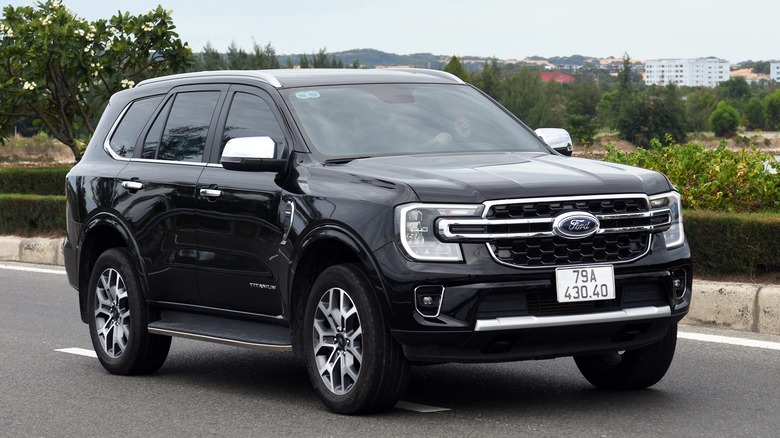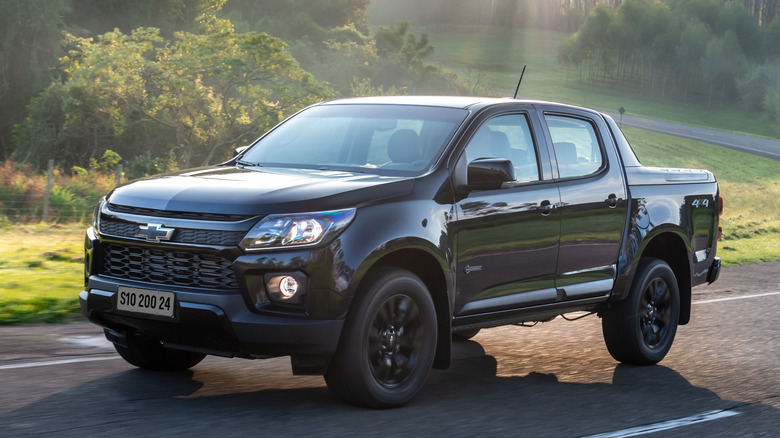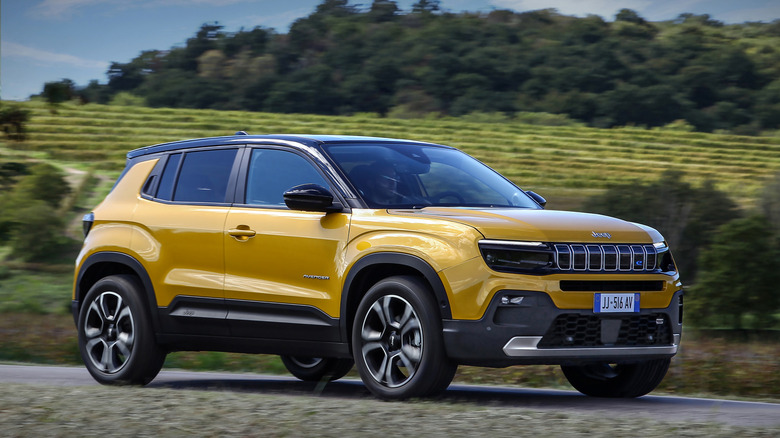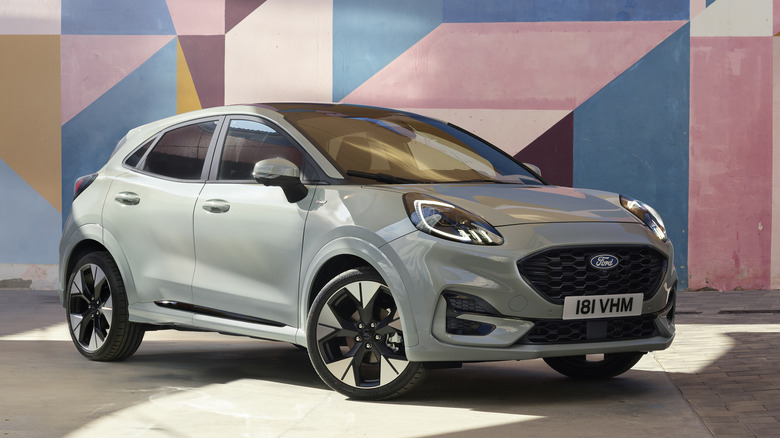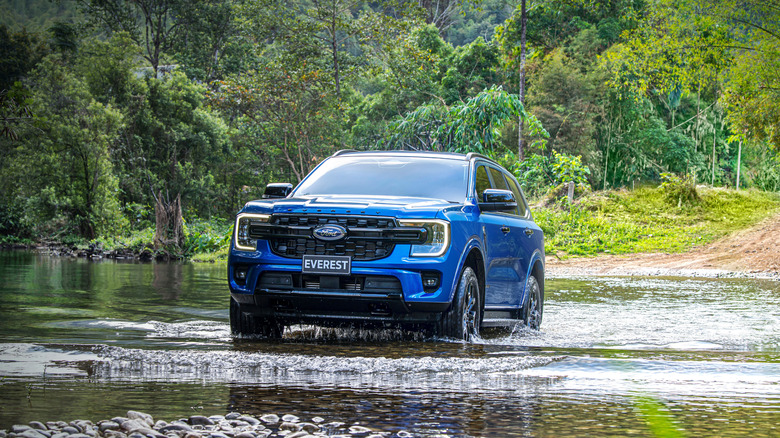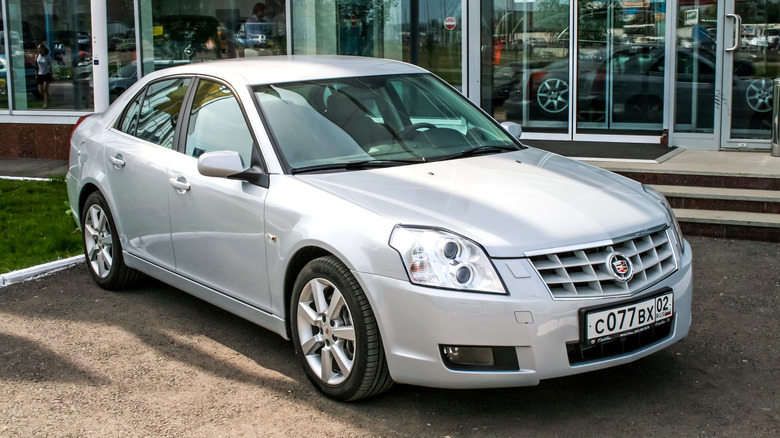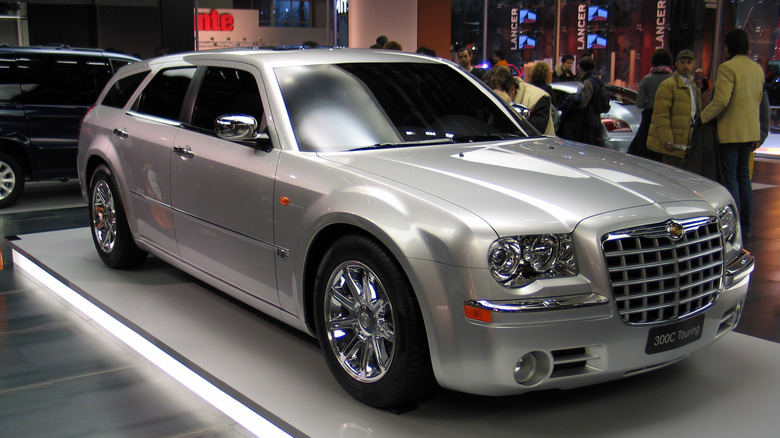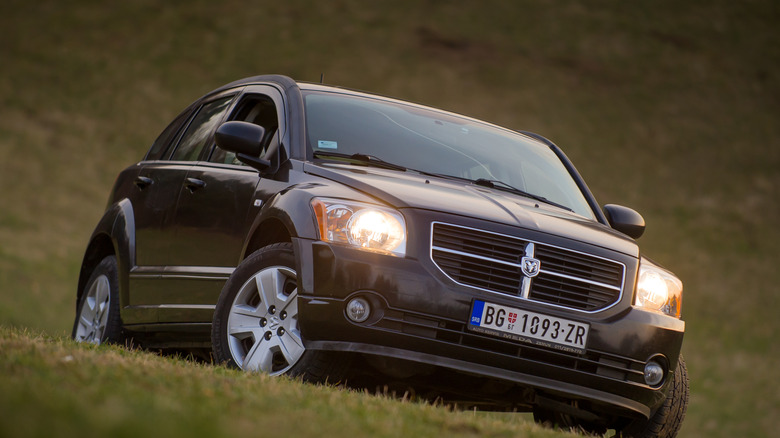7 American-Brand Cars That You Can't Buy In The USA
While some brands have come and gone over the years, these days most American cars are made by the big three American automakers: Ford, General Motors, and what is now known as Stellantis. It won't surprise you to hear that most American cars, and especially the ones manufactured in the United States, are designed primarily to be sold in the U.S. and Canada, and in some cases, Mexico.
However, there are a few notable exceptions to this rule. American automakers have made numerous attempts to branch out into other markets, such as the nations of Europe. And if you believe they were successful, there's this oceanfront property I'd like to tell you about ...
No matter how much they tried, American automakers simply couldn't convince Europeans and people in some other countries to buy American. This was bad enough on its own, but it became worse when automakers went out of their way to manufacture cars specifically for foreign markets.
Chevrolet S10: a workhorse outside the USA
The U.S. and Canada are the only countries where a pickup truck can act as a replacement for every potential vehicle in someone's garage. The hauler, the family wagon, the off-roader, and in some rare cases, like the Ford SVT Lightning, the sports car. Meanwhile, in the rest of the world, pickup trucks, while still pretty refined, are mostly used for traditional pickup-truck things.
That's certainly the case with the Chevrolet S10. General Motors dumped this nameplate by the early 2000s, replacing it with the Avalanche, one of the strangest Chevrolets of all time, and then the Chevrolet Colorado, one of the most compelling mid-size trucks on the market right now. However, the S10 lives on in the Carribbean and Latin America, where it's a much more utilitarian and work-focused pickup truck.
Despite the current generation being on the market for a good 12 years, it just received a new update, receiving Chevy's new corporate face and a thoroughly updated interior. Power comes from a humble 2.8L Duramax four-cylinder diesel, and, naturally, four-wheel drive is available. The S10 is a very popular work truck in Latin America and the Caribbean, and while it takes up a similar spot in the lineup as the Colorado in the U.S., it's clear from most aspects that they're two completely different animals.
Jeep Avenger: a little car made for tight spaces
Of all Stellantis/FCA brands that were offered in Europe, Jeep is the only one that has still somehow managed to stay afloat. Despite Jeep's dark age in the late '00s and early '10s — steer clear of those Jeeps! – and most Jeep models' objective unsuitability for Europe due to their size and thirstiness, they're still doing well enough to stay there. In fact, under the leadership of Carlos Tavares, Jeep recently started offering a model specifically designed for Europe.
The Avenger respects its Jeep badge and the design language that comes along with that, but underneath the skin, it's anything but a Jeep. Under the rugged styling, the tiny Avenger is based on the PSA Group's CMP/e-CMP platform, which also underpins about a dozen other vehicles from brands including Peugeot and Opel.
Originally, the Avenger was supposed to be only offered with an electric powertrain, but the lineup would eventually be expanded. There's a mild hybrid, a plug-in hybrid in the Avenger 4xe, as well as a pure gasoline 1.2-L three-cylinder with 100 horsepower, and that one comes with a stick shift. While the electric one won't get as far as your Wrangler with angry headlights when the going gets tough, it's a much more suitable package for those who want the charismatic Jeep styling on a car much more suitable for crowded European cities.
Ford Puma: enjoyable to drive
If you regularly play Forza Horizon, you've likely heard of the Ford Puma. It was a tiny front-wheel-drive two-door sports car, based on the Ka, that Ford offered throughout the late '90s and early 2000s in Europe. In 2019, the Puma name was revived ... then slapped on the back of a really small crossover SUV.
Yes, the entry level crossover in Ford's lineup now carries the Puma name. Most car enthusiasts consider this blasphemy, while revival of the Capri moniker proves that Ford absolutely doesn't, but if we look past the name, the Puma is a good little car in its own right. You can have it with Ford's 1.0L EcoBoost engine, now offered with mild hybrid power on the recently released facelift version. A fully electric version of the Puma is also due soon, and there was also the fiery Puma ST performance model. Sadly, the facelift version gets less power and only an automatic transmission, so we'll gloss over that one.
Considering that the Fiesta no longer exists, this is the only way to have a small Ford in Europe. The styling is cutesy and purposeful with its short overhangs, while in a recent drive I found the experience surprisingly fun. Solid tech, and a pretty decent amount of space on the inside. While Ford stubbornly refuses to offer the Puma in North America, it could prove a serious and solid rival to the likes of the Nissan Kicks.
Ford Everest: itching to come to America
Ford in North America absolutely loves SUVs. It loves SUVs so much, in fact, that it sacrificed most of its normal car lineup except for the Mustang for a bigger emphasis on the SUVs and trucks. There is absolutely no shortage of Ford SUVs or trucks you can buy today, but there's one gap in Ford's SUV lineup in North America that's yet to be filled.
While Americans have enjoyed the F-150 for over 70 years now, the Ranger only recently returned as the Blue Oval's answer to the booming mid-size truck segment in North America. Most T6 Rangers are built in South Africa, though for North America production had to be moved to the U.S. due to an American tariff on foreign light-duty trucks.
In some global markets like Australia, Ford also offers the Everest. It's based on the same T6 platform that underpins the Ranger and the most recent Volkswagen Amarok, but it's an SUV instead of a truck. Not a hardtop, a proper ground-up SUV. With the showstopping rise in popularity of the Toyota 4Runner, a vehicle like the Ford Everest would make a lot of sense in North America. Sadly, for whatever reason, Ford still refuses to offer it.
Cadillac BLS: a rebadged Saab
Now on to some stuff that's out of production even outside the USA. While BLS officially stands for "B-segment Luxury Sedan," car enthusiasts have deduced that this bizarro Caddy's name stands for "Bob Lutz Special," named after GM's product manager at the time of its debut in 2006. The Cadillac BLS was an enigmatic vehicle. It wasn't the first Cadillac to be exported to Europe, but it was the first to be designed specifically for Europe. So much so that the BLS was never offered in North America in any official capacity.
The BLS was a lot smaller than the CTS, slotting in the same size class as the BMW 3 Series and Mercedes C-Class of the time. Power came from one of GM's own turbo four-cylinder engines, a V6, or a Fiat-built turbodiesel. Oh, and there was a station wagon as well. Because Europeans love station wagons.
Peel away the very period-correct Cadillac styling, however, and the BLS revealed itself to be a heavily reskinned Saab 9-3. No surprise, given that GM still owned Saab during this time. Journalists and the general public wasn't convinced by the Swede disguised as an American, opting instead for one of the Germans — the 3 Series comes to mind immediately. Or, you know, the actual Saab 9-3 instead. After the BLS flopped, Cadillac pulled out of Europe, and only recently started a plan to return with its EV lineup.
Chrysler 300C Touring: very much a Magnum
Once again, we return to Chrysler trying to make an impact on the European market, this time attacking in one of the Old Continent's favorite segments. Europeans love luxury sedans, and Europeans love station wagons, so Chrysler decided to join in on this highly lucrative segment with a wagon version of the 300C.
Yes, this is a version of the Chrysler 300C, a quintessential full-size American car, that you could never have in the USA. This wasn't all that surprising, as the Chrysler 300C, whose C stands for something really interesting, was already on offer in Europe throughout the 2000s with the option of a Mercedes-built turbodiesel engine. The 300C Touring will likely look familiar to many Americans, and there's a good reason for that. Obviously, the 300C Touring is not a bespoke model — that would be way too expensive. In fact, the 300C Touring is little more than a Dodge Magnum with the 300C front end and interior grafted onto it.
There's nothing wrong with this concept in theory, but the 300C Touring wasn't enough to sway European buyers away from the distantly related and way better E-Class wagon. The Magnum badge engineering job did have a side effect, however: some enthusiasts started swapping the 300C's front end onto the Magnum in America, resulting in what could only be described as "we have 300C Touring at home." The 300C didn't last too long in Europe, and you definitely can't have one anymore.
Dodge Caliber Diesel: falling short in Europe
The 2000s were unmistakably a dark period for Dodge, with quality issues and subpar products all around. During the early part of the 2000s, Dodge's answer to the compact-car craze, initially, was the Neon, which was surprisingly a pretty good car, but Chrysler would sell you the PT Cruiser, the posterboy for how not to do retro styling. After both the Neon and the PT Cruiser were discontinued, Dodge put together a new hatchback model to compete with the likes of the Volkswagen Golf: the Caliber.
As you might expect from a Chrysler product of the 2000s, the Caliber wasn't the best the segment had to offer, mostly rplagued by serious quality issues and a lackluster experience behind the wheel. U.S. domestic-market Calibers used a 2.0L or 2.4L four-cylinder engine, but in Europe, where Dodge was also trying to make it big, there was an alternative.
In Europe, the Dodge Caliber was also offered with a 2.0L turbodiesel four-cylinder, courtesy of a strategic partnership with Volkswagen that also gave us the Routan, a thinly disguised Grand Caravan. In other words, this was an American hatchback with the same engine as the Golf, the benchmark hatchback it was competing with. Needless to say, the Caliber didn't find enough buyers in Europe, being discontinued only after a few short years. A lot of people instead opting for the competition, especially the car that donated its engine to the Caliber.
